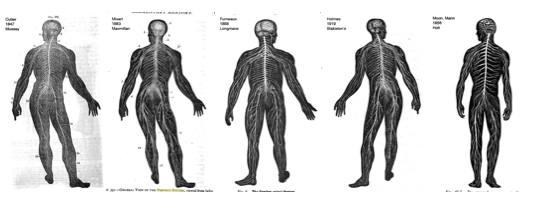I Speak to You Through Electrical Language: Traveling Into the Nineteenth Century with the “Nervous Icon”

Tracing the history of an image of the human central nervous system, reproduced in more than 100 texts, above reveals surprising connections between the seemingly disparate topics of printing technology, print piracy, electricity, telegraphy, spirituality, abolition, and that most central of nineteenth century anxieties, masturbation. In its hyper-nakedness, the image warned of the dangerous interconnectedness of the body, where stimulation, or over-stimulation, of any one part would cause damage to the entire system.

